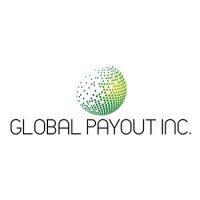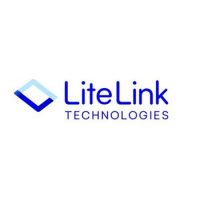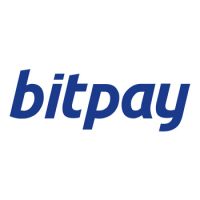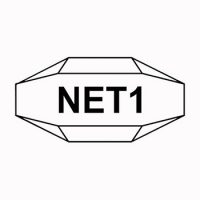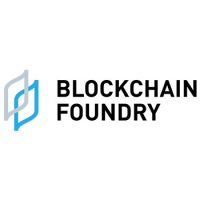Blockchain Press Releases
Artificial Intelligence Market worth $1,345.2 billion by 2030 – Exclusive Report by MarketsandMarkets™
CHICAGO, June 30, 2023 /PRNewswire/ — The future of the AI market appears promising with the development of conversational AI and autonomous systems, as well as the penetration of new industries, deep learning, and edge computing. Personalization, continued investment, and research will all have an impact on the direction of the AI market in the future.
The global Artificial Intelligence Market size is expected to grow at a Compound Annual Growth Rate (CAGR) of 36.8% during the forecast period, to reach USD 1,345.2 billion by 2030 from USD 150.2 billion in 2023, according to a new report by MarketsandMarkets™. The adoption of artificial intelligence (AI) technology has been remarkable since its introduction, leading to significant growth in the global market. This growth attributed to the increasing demand for artificial intelligence technologies across diverse industry verticals.
Browse in-depth TOC on “Artificial Intelligence Market“
270 – Tables
60 – Figures
300 – Pages
Download PDF Brochure @ https://www.marketsandmarkets.com/pdfdownloadNew.asp?id=74851580
Scope of the Report
|
Report Metrics |
Details |
|
Market size available for years |
2017 – 2030 |
|
Base year considered |
2022 |
|
Forecast period |
2023 – 2030 |
|
Forecast units |
USD (Billion) |
|
Segments covered |
Offering, Technology, Business Function, Verticals, and Region |
|
Geographies covered |
North America, Europe, Asia Pacific, Middle East & Africa, and Latin America |
|
Companies covered |
Google (US), Microsoft (US), IBM (US), Oracle (US), AWS (US), Intel (US), Salesforce (US), SAP (Germany), Cisco (US), Meta (US), HPE (US), Siemens (Germany), Huawei (China), NVIDIA (US), Baidu (China), SAS Institute (US), OpenAI (US), H2O.ai (US), iFLYTEK (China), Alibaba Cloud (China), General Vision (US), Darktrace (UK) and many more. |
Organizations are recognizing the transformative potential of artificial intelligence in improving operational efficiency, enhancing customer experiences, and driving innovation. Artificial Intelligence technology such as machine learning, natural language processing, computer vision, and others are revolutionizing various sectors, including healthcare, finance, manufacturing, and retail. The advancements in AI algorithms, computing power, and data availability are further fuelling the growth of the AI market, as businesses seek to leverage the potential of AI to gain a competitive edge in the digital era.
As per verticals, the healthcare & life sciences segment to grow at highest CAGR during the forecast period
The Artificial Intelligence Market is segmented on verticals into retail & eCommerce, BFSI, Government & Defense, Healthcare & Life Sciences, Telecom, Energy & Utilities, Manufacturing, Agriculture, IT/ITeS, Media & Entertainment, Automotive, Transportation and Logistics and other verticals (Construction, education, and travel and hospitality). As per verticals, the healthcare and life sciences vertical is expected to grow at the highest CAGR during the forecast period. This industry is experiencing significant growth and is poised to contribute significantly to the global Artificial Intelligence Market. Artificial intelligence applications in healthcare & life sciences includes patient data and risk analysis, medical imaging and diagnostics, precision medicine, drug discovery, and much more. The use of electronic medical records has led to the expansion of patient data, while the risk analysis market benefits from artificial intelligence systems’ risk management and predictive analytics capabilities for payers and healthcare providers. These advancements in artificial intelligence technology are driving innovation and transformation within the healthcare sector.
By business function marketing and sales accounts to hold the largest market size during the forecast period
As per business function, marketing and sales segment to hold the largest market size for the Artificial Intelligence Market during the forecast period. With the aid of AI-powered algorithms, businesses personalize their marketing campaigns, target the right audience, and deliver relevant content at the optimal time. Artificial intelligence also enhances sales processes by providing predictive analytics, lead scoring, and automated customer support through chatbots. Furthermore, artificial intelligence enables advanced data analytics and segmentation, optimizing sales funnels and improving conversion rates. The adoption of artificial intelligence in marketing and sales is reshaping how businesses engage with customers, optimize their strategies, and drive revenue growth.
Request Sample Pages @ https://www.marketsandmarkets.com/requestsampleNew.asp?id=74851580
As per region, Asia Pacific is anticipated to growth at the highest CAGR during the forecasted period
As per region, Asia Pacific is anticipated to grow at the highest CAGR during the forecasted period. The adoption of artificial intelligence (AI) in the Asia Pacific region is experiencing significant growth. With advancements in technology, increased digitalization, and a focus on innovation, businesses and governments in Asia Pacific are embracing artificial intelligence solutions across various sectors. Additionally, the availability of skilled talent and robust infrastructure further fuels the growth of artificial intelligence across the region. As a result, Asia Pacific is emerging as a hub for AI innovation and implementation.
Top Key Companies in Artificial Intelligence Market:
Some of the major Artificial Intelligence Market vendors are Google (US), Microsoft (US), IBM (US), Oracle (US), AWS (US), Intel (US), Salesforce (US), SAP (Germany), Cisco (US), Meta (US), HPE (US), Siemens (Germany), Huawei (China), NVIDIA (US), Baidu (China), SAS Institute (US), OpenAI (US), H2O.ai (US), iFLYTEK (China), Alibaba Cloud (China), General Vision (US), Darktrace (UK), Blackberry Limited (Canada), DiDi Global (China), Face++ (China), Inbenta (US), Anju Software (US), Butterfly Network (US), Atomwise (US), AIBrain (US), SK Hynix (South Korea), Progress (US), PrecisionHawk (US), AgEagle Aerial System (US), Neurala (US), Twitter (US), Aurea Software (US), Persado (US), 8×8 (US), Appier (Taiwan), GumGum (US), IPRO (US), Graphcore (UK), Preferred Networks (Japan), Applied Brain Research (Canada), Pilot AI (US), Iris Automation (US), Gamaya (Switzerland), ec2ce (Spain), Descartes Labs (US), Mythic (US), Ada (Canada), Mostly AI (Austria), Sentient.io (Singapore), Lumen5 (Canada), AI Superior (Germany), Fosfor (India), Intrinsic (US), Jasper (US), Soundful (US), Writesonic (US), One AI (Israel).
Recent Developments:
- In May 2023, Google announced the launch of two new AI powered solutions named Target and Lead Identification Suite, and Multiomics Suite for the life sciences industry, aimed at expediting drug discovery and precision medicine for biotech companies, pharmaceutical firms, and public sector organizations.
- In May 2023, HPE announced an enhancement to its HPE Ezmeral Software platform. HPE Ezmeral Software expands the data and analytics capabilities of HPE GreenLake, extending from the edge to the cloud. It serves as the foundation for machine learning (ML) and artificial intelligence (AI) initiatives, providing the necessary infrastructure and tools for data processing and analysis.
- In April 2023, IBM unveiled its new security suite named IBM Security QRadar Suite, which is designed to unify and boost the security analyst experience throughout the whole incident lifecycle. The IBM Security QRadar Suite represents a significant evolution and expansion of the QRadar brand, encompassing all fundamental threat detection, investigation, and response capabilities. It has a single, updated user interface for all products that is integrated with cutting-edge AI and automation to enable analysts to work more quickly, effectively, and precisely across their main toolsets.
- In March 2023, Cisco has announced a number of new AI-powered innovations for its Webex collaboration platform. These innovations are designed to help organizations create more engaging and productive hybrid work experiences.
- In September 2022, SAP introduced recent improvements to the SAP SuccessFactors HXM Suite that bring together data, machine learning and artificial intelligence (AI) to provide organizations with a better understanding of the capabilities within their workforce.
Inquiry Before Buying @ https://www.marketsandmarkets.com/Enquiry_Before_BuyingNew.asp?id=74851580
Artificial Intelligence Market Advantages:
- Automation of routine, repetitive operations is made possible by AI technologies, which boosts productivity and efficiency. AI systems can quickly and accurately analyse enormous amounts of data, which reduces human error and enables organisations to make quicker and more informed decisions.
- By examining client information and preferences, AI-powered systems may personalise customer experiences. Artificial intelligence-powered chatbots and virtual assistants can offer real-time assistance and support, increasing client satisfaction and engagement.
- By automating tasks, artificial intelligence (AI) technology can significantly reduce operating costs for businesses. Long-term cost advantages emerge from AI-powered systems’ ability to execute jobs that would otherwise require human resources.
- Organisations may make data-driven decisions with the aid of AI algorithms, which can analyse complex databases and extract insightful information. Predictive analytics driven by AI can discover anomalies, spot patterns, and forecast trends, allowing businesses to find opportunities and reduce risks.
- Artificial intelligence (AI) systems can accurately handle and analyse enormous volumes of data, removing human biases and errors. Data patterns and linkages that humans might find difficult to identify can be found by AI algorithms, producing findings that are more accurate and trustworthy.
- Without major infrastructure changes, AI systems can be quickly expanded to manage increasing demands. AI algorithms are suited for firms experiencing rapid expansion because they can adapt and handle greater datasets as data volume increases.
- AI promotes innovation by enabling the development of new products, services, and business models. Numerous industries, including healthcare, transportation, banking, and manufacturing, have benefited from AI advancements, creating new opportunities and fostering economic growth.
- Organisations can monitor operations, spot anomalies, and react swiftly to shifting conditions thanks to AI systems’ ability to analyse data in real-time. Real-time insights allow for proactive decision-making and can aid in mitigating risks or possible problems.
- Utilising AI technologies can provide businesses a competitive edge in the marketplace. Processes can be streamlined, operations can be improved, and businesses can produce better goods and services, giving them an edge over rivals.
- By examining fresh information and user feedback, AI algorithms may continually learn and advance over time. AI systems can adjust and improve their performance thanks to machine learning techniques like neural networks, which ensures they remain useful and efficient in changing contexts.
Report Objectives
- To define, describe, and predict the Artificial Intelligence Market by offering (hardware, software, and services), technology, business function, vertical, and region.
- To provide detailed information related to major factors (drivers, restraints, opportunities, and industry-specific challenges) influencing the market growth.
- To analyze opportunities in the market and provide details of the competitive landscape for stakeholders and market leaders.
- To forecast the market size of segments with respect to five main regions: North America, Europe, Asia Pacific (APAC), Middle East & Africa (MEA), and Latin America
- To profile key players and comprehensively analyze their market rankings and core competencies.
- To analyze competitive developments, such as partnerships, new product launches, and mergers and acquisitions, in the Artificial Intelligence (AI) market
- To analyze the impact of the recession in the Artificial Intelligence (AI) market
Browse Adjacent Markets: Artificial Intelligence (AI) Market Research Reports & Consulting
Related Reports:
Embedded AI Market – Global Forecast to 2028
AI as a Service Market – Global Forecast to 2028
Generative AI Market – Global Forecast to 2028
Synthetic Data Generation Market – Global Forecast to 2028
Text to Video AI Market – Global Forecast to 2027
About MarketsandMarkets™
MarketsandMarkets™ is a blue ocean alternative in growth consulting and program management, leveraging a man-machine offering to drive supernormal growth for progressive organizations in the B2B space. We have the widest lens on emerging technologies, making us proficient in co-creating supernormal growth for clients.
The B2B economy is witnessing the emergence of $25 trillion of new revenue streams that are substituting existing revenue streams in this decade alone. We work with clients on growth programs, helping them monetize this $25 trillion opportunity through our service lines – TAM Expansion, Go-to-Market (GTM) Strategy to Execution, Market Share Gain, Account Enablement, and Thought Leadership Marketing.
Built on the ‘GIVE Growth’ principle, we work with several Forbes Global 2000 B2B companies – helping them stay relevant in a disruptive ecosystem. Our insights and strategies are molded by our industry experts, cutting-edge AI-powered Market Intelligence Cloud, and years of research. The KnowledgeStore™ (our Market Intelligence Cloud) integrates our research, facilitates an analysis of interconnections through a set of applications, helping clients look at the entire ecosystem and understand the revenue shifts happening in their industry.
To find out more, visit www.MarketsandMarkets™.com or follow us on Twitter, LinkedIn and Facebook.
Contact:
Mr. Aashish Mehra
MarketsandMarkets™ INC.
630 Dundee Road
Suite 430
Northbrook, IL 60062
USA: +1-888-600-6441
Email: [email protected]
Research Insight: https://www.marketsandmarkets.com/ResearchInsight/artificial-intelligence-market.asp
Visit Our Website: https://www.marketsandmarkets.com/
Content Source: https://www.marketsandmarkets.com/PressReleases/artificial-intelligence.asp
Logo: https://mma.prnewswire.com/media/660509/MarketsandMarkets_Logo.jpg
View original content:https://www.prnewswire.co.uk/news-releases/artificial-intelligence-market-worth-1-345-2-billion-by-2030—exclusive-report-by-marketsandmarkets-301867849.html

Blockchain Press Releases
Bybit P2P: Three Ways to Win Rewards for Block Traders

DUBAI, UAE, May 9, 2025 /PRNewswire/ — Bybit, the world’s second-largest cryptocurrency exchange by trading volume, is pleased to renew its 10,000 USDT giveaway for P2P block trading users. The fresh round of Bybit P2P Block Trade Giveaway starts on May 8 until July 11, 2025 and comes with three tasks for specific user groups.
Exclusive on Bybit P2P, eligible users may register for the event, start their block trading journey, or become a P2P advertiser to unlock three prize pools.
Event period: May 8, 2025, 8AM UTC – Jul. 11, 2025, 11:59PM UTC
- New Users Exclusive: The first 20 new users will get to claim 175 USDT instantly by completing their first block trade.
- Existing Users: Users who trade 20,000 USDT or more in Block Trade (except existing Block Trade Advertisers) will get to share in a 3,500 USDT prize pool, with up to 100 USDT each in prizes up for grabs.
- Block Trade Advertisers Exclusive: A 3,000 USDT prize pool is reserved for Block Trade Advertisers—the first 20 eligible Block Trade Advertisers stand to earn 150 USDT when they trade at least 50,000 USDT.
Bybit’s P2P Block Trading platform enables private transactions of substantial volumes through Bybit’s intuitive interface. Customized for large digital asset purchases sales, the service streamlines regular order placements into a single order for bulk transactions, minimizing slippage and typically offering reduced fees on top of Bybit’s enterprise-grade security.
The marketplace presents earning potential for users with diverse cryptoholdings. With generous transaction limits ranging from 10,000 to 200,000 USDT per order, Bybit P2P Block Trading serves as a reliable solution for traders looking to scale up their P2P trading.
Rewards are on a first-come, first-served basis. Restrictions apply. For the detailed terms and conditions, users may visit: Bybit P2P Block Trade
#Bybit / #TheCryptoArk
About Bybit
Bybit is the world’s second-largest cryptocurrency exchange by trading volume, serving a global community of over 60 million users. Founded in 2018, Bybit is redefining openness in the decentralized world by creating a simpler, open and equal ecosystem for everyone. With a strong focus on Web3, Bybit partners strategically with leading blockchain protocols to provide robust infrastructure and drive on-chain innovation. Renowned for its secure custody, diverse marketplaces, intuitive user experience, and advanced blockchain tools, Bybit bridges the gap between TradFi and DeFi, empowering builders, creators, and enthusiasts to unlock the full potential of Web3. Discover the future of decentralized finance at Bybit.com.
For more details about Bybit, please visit Bybit Press
For media inquiries, please contact: [email protected]
For updates, please follow: Bybit’s Communities and Social Media
Discord | Facebook | Instagram | LinkedIn | Reddit | Telegram | TikTok | X | Youtube

Photo – https://mma.prnewswire.com/media/2683373/Bybit_P2P_Three_Ways_Win_Rewards_Block_Traders.jpg
Logo – https://mma.prnewswire.com/media/2267288/Logo.jpg
![]() View original content:https://www.prnewswire.co.uk/news-releases/bybit-p2p-three-ways-to-win-rewards-for-block-traders-302450952.html
View original content:https://www.prnewswire.co.uk/news-releases/bybit-p2p-three-ways-to-win-rewards-for-block-traders-302450952.html

Blockchain
Blocks & Headlines: Today in Blockchain – May 9, 2025 | Robinhood, Solana, Tether, China, Women in Web3

Today’s blockchain landscape pulses with innovation, expansion and strategic jockeying. From established trading platforms laying the groundwork for international tokenized US asset markets to fresh efforts empowering women in Web3, the industry is evolving at frantic pace. Solana-based tokenization pathways, China’s state-driven blockchain masterplan and Tether’s push onto new Layer-1 rails further underscore diversification. In this daily op-ed, we unpack five major developments—examining what they mean for DeFi growth, NFT marketplaces, regulatory contours and the ongoing quest for greater inclusivity in crypto.
1. Robinhood’s European Blockchain Trading Ambitions
News Summary
Robinhood Markets Inc. is reportedly constructing its own blockchain infrastructure to facilitate trading of U.S. equities and other assets in European markets. Insiders suggest the project seeks to leverage distributed-ledger technology for settlement efficiency, near-real-time clearing and reduced reliance on legacy central counterparties. The move signals Robinhood’s ambition to transcend its domestic brokerage roots and capture European retail and institutional order flow.
Key Details
-
Infrastructure Build: A private, permissioned ledger governed by Robinhood and selected counterparties.
-
Asset Scope: U.S. equities, ETFs and potentially tokenized debt instruments.
-
Regulatory Interface: Engagements with the U.K. Financial Conduct Authority (FCA) and European Securities and Markets Authority (ESMA) to align on custody and market-making rules.
-
Timeline: Internal pilots slated for Q4 2025, with public rollout in mid-2026.
Analysis & Opinion
Robinhood’s pivot underscores a broader industry trend: exchanges and brokerages striving to “own the rails” rather than simply interface with existing clearinghouses. By internalizing settlement on a bespoke blockchain, Robinhood hopes to slash settlement times from T+2 to near-instant, a boon for liquidity providers and high-frequency traders. However, risks include the complexity of cross-border regulatory compliance and the operational challenge of maintaining robust on-chain and off-chain reconciliations.
From a DeFi convergence standpoint, Robinhood’s ledger could bridge traditional and decentralized finance, enabling tokenized margin lending and programmable corporate actions directly on-chain. Should Robinhood open permission to DeFi protocols, we may witness new hybrid liquidity pools that blend CEX order books with AMM liquidity. This would mark a milestone in mainstream DeFi adoption—and potentially pressure incumbents like Nasdaq to innovate their own on-chain settlement layers.
Source: Bloomberg
2. Women in Web3: Cultivating Greater Gender Diversity
News Summary
A recent deep-dive from Cointelegraph spotlights the persistent gender gap in blockchain and crypto. Despite Web3’s ethos of decentralization, women represent less than 20 percent of crypto investors and under 10 percent of core development teams. The article outlines initiatives—from targeted grants and incubation programs to mentorship networks—aimed at lowering barriers and attracting more female talent.
Key Details
-
Current Statistics: Women account for approximately 17 percent of crypto traders globally; in development, the share dips below 8 percent.
-
Notable Initiatives:
-
Women in Blockchain Fund: USD 50 million allocated for early-stage female founders.
-
Global Web3 Sisters Network: Mentorship platform pairing novices with veteran executives.
-
University Partnerships: Scholarships for women studying blockchain engineering and cryptography.
-
Analysis & Opinion
Web3’s promise of equal-opportunity innovation rings hollow if half the population remains sidelined. Heightened grant funding and mentorship can help, but systemic change requires cultural shifts within DAOs, core teams and investor circles. Projects and protocols must adopt policies—like blind code reviews, diversity hiring quotas and inclusive governance frameworks—to ensure sustainable participation.
Moreover, as the industry grapples with regulatory scrutiny, diverse leadership can foster better risk management and community trust. Women leaders have often been at the forefront of compliance, ethics and consumer protection—even in traditional finance—qualities sorely needed in crypto’s maturing phase. Token projects that embed gender-diverse advisory boards may see stronger reputational profiles and wider community buy-in.
Source: Cointelegraph
3. SOL Strategies: Tokenizing Shares on Solana
News Summary
SOL Strategies, a financial-services startup, is exploring a pathway to tokenize private and publicly traded shares on the Solana blockchain. Their recently filed whitepaper proposes a framework where equity is represented as SPL tokens, enabling fractional ownership, 24/7 trading and programmable dividend distributions.
Key Details
-
Token Standard: Extension of Solana Program Library (SPL) with “Equity Token” schema.
-
Custody Model: Licensed custodian holds underlying shares; token holders have legal claim via smart-contract link.
-
Compliance Layer: On-chain KYC/AML middleware to restrict token transfers to approved wallets.
-
Pilot Partners: Early engagements with two mid-cap European tech firms eyeing capital-raising via tokenization.
Analysis & Opinion
Tokenized equity stands to revolutionize capital markets by lowering minimum investment thresholds and unlocking global liquidity. On Solana, with its sub-second finality and low fees, fractional shares could trade seamlessly—outpacing Ethereum’s scalability challenges. Yet the critical hurdle lies in regulatory acceptance: will securities regulators view these tokens as bona fide equity or as unregistered securities?
SOL Strategies’ integrated custody approach could mollify regulators, replicating existing T+2 standards while enabling T+0 settlement on-chain. Should they secure regulatory sandbox approvals in the U.K. or Singapore, other blockchains—like Stellar and Polkadot—may race to develop similar tokenization toolkits. For DeFi protocols, tokenized equities could become collateral in lending pools, further intertwining traditional and decentralized finance.
Source: Newsfile Corp.
4. China’s Blockchain Playbook: Infrastructure, Influence & New Frontiers
News Summary
The Center for Strategic and International Studies (CSIS) published an extensive analysis of China’s state-driven blockchain strategy. Beyond its digital yuan rollout, Beijing is investing in cross-border infrastructure, influencing global standards bodies and forging Belt and Road blockchain corridors across Asia, Africa and Latin America.
Key Details
-
Key Initiatives:
-
BSN 2.0: Blueprint for national and international consortium chains.
-
International Standards: Active lobbying in ISO/TC 307 for governance models favoring state-actors.
-
Tech Diplomacy: Blockchain MOUs with Pakistan, Indonesia and several African union members.
-
-
Strategic Goals: Extend digital yuan acceptance, export Chinese ledger tech, shape global governance.
Analysis & Opinion
China’s multi-pronged approach signals blockchain’s emergence as a theater of geopolitical competition. By undercutting SWIFT dependency and offering turnkey consortium-chain solutions, Beijing enhances its financial influence in Belt and Road countries. Western governments and multinationals must navigate this blockchain bifurcation—between open public rails and permissioned state-backed consortia.
For crypto projects, the CSIS report offers both caution and opportunity. While the digital yuan may corner state-aligned corridors, decentralized networks remain resilient by design. Projects focusing on interoperability—such as Polkadot bridges and Cosmos IBC—can link fragmented chains and preserve open value transfer. Investors should monitor on-chain metrics in emerging markets, as Chinese-backed consortium chains gain traction in cross-border trade finance.
Source: CSIS
5. Tether Expands Stablecoin Reach to 196 Million Users via Kaia
News Summary
Tether has launched USDT on the Kaia blockchain, bringing its flagship stablecoin to Kaia’s user base of approximately 196 million. Kaia, a burgeoning Layer-1 optimized for high-throughput mobile applications, opens new corridors for USDT in gaming, remittances and micro-trading in emerging markets.
Key Details
-
Technical Integration: USDT issued as a native Kaia token, supported by Tether’s reserve-backing audit framework.
-
User Impact: Near-zero fees for micro-transactions; sub-second confirmation times even on mobile networks.
-
Partnership Scope: Integration with Kaia’s wallet SDK and gaming marketplace; joint launch of an educational DApp for fiat-on-ramp literacy.
Analysis & Opinion
By deploying on Kaia, Tether diversifies its blockchain footprint beyond Ethereum, Tron and Solana, underscoring a multi-chain thesis for stablecoin ubiquity. Emerging-market users—often plagued by volatile local currencies—stand to benefit immensely from a mobile-first, low-cost remittance rail. Moreover, Kaia’s developer incentives may spawn DeFi lending dApps collateralized by USDT, fueling localized credit markets.
Yet healthy competition among blockchains for stablecoin volume could concentrate risk: reserve transparency, network stability and regulatory compliance will differentiate winners. Tether’s public attestations and reserve audits are critical, but as US regulators intensify scrutiny on stablecoin giants, projects deploying on smaller chains may face fresh legal complexities around money-transmission licensing.
Source: Bitcoin.com
Conclusion & Key Takeaways
-
Institutional On-ramp Acceleration: Robinhood’s European chain signals major brokerages view blockchain as core infrastructure—not mere gadget.
-
Inclusivity Imperative: Women’s underrepresentation remains a blindspot; targeted grants and cultural reforms are needed for equal Web3 participation.
-
Tokenization Tide: Solana’s high-speed rails may host the next wave of equity tokens, bridging capital markets and DeFi.
-
Geopolitical Battlegrounds: China’s consortium chains and digital-yuan corridors illustrate how blockchain is reshaping global influence.
-
Stablecoin Multichain Strategy: Tether’s Kaia integration reflects the logic of diversifying rails to reach underserved, mobile-first users.
As blockchain advances, the interplay between technological innovation, regulatory frameworks and social inclusion will define whether the next chapter of crypto fulfills its vision of open, equitable finance—or replicates old hierarchies in digital garb. Today’s headlines underscore that the path forward lies in cross-chain interoperability, proactive policy-shaping, and a relentless focus on broadening the community that stewards and benefits from these transformative networks.
The post Blocks & Headlines: Today in Blockchain – May 9, 2025 | Robinhood, Solana, Tether, China, Women in Web3 appeared first on News, Events, Advertising Options.
Blockchain Press Releases
MEXC Lists USD1, Accelerating Global Stablecoin Innovation with World Liberty Financial

VICTORIA, Seychelles, May 8, 2025 /PRNewswire/ — MEXC, a leading global cryptocurrency exchange, announced that it will list World Liberty Financial USD (USD1) in the Innovation Zone on May 9, 2025 (UTC). The USD1/USDT trading pair will also open at 08:00 on May 8, 2025 (UTC), and the MEXC Convert feature will be available from 09:00 on May 8, 2025 (UTC), offering users a seamless asset conversion experience. This listing expands the range of digital assets on the platform and further demonstrates MEXC’s commitment to advancing the global stablecoin ecosystem.
USD1: A New Era in Stablecoins and Financial Transparency
USD1 is World Liberty Financial (WLFI)’s stablecoin that provides secure and transparent digital asset services for global users. The stablecoin is backed 1:1 by the US dollar, with its reserve assets custodied by BitGo, held and subject to regular audits by third-party accounting firms to ensure transparency and stability. Currently, USD1 is deployed on both Ethereum and BNB Chain, with plans to expand to additional blockchains in the future to enhance interoperability.
Furthermore, USD1 has made significant strides in the decentralized finance (DeFi) ecosystem. For example, ListaDAO has launched a USD1 lending vault on BNB Chain, providing liquidity support for 20 million USD1. Renowned market maker DWF Labs has also deployed USD1 liquidity across multiple platforms, further enhancing its availability and market depth. According to the data from CoinMarketCap, USD1’s market capitalization has surpassed USD 2.12 billion, demonstrating strong market demand.
Special Promotion to Celebrate the Listing
To celebrate the successful listing of USD1, MEXC is launching a series of special offers to thank its users for their support. Starting May 8, 2025, at 08:00 (UTC), users can enjoy the following benefits:
- Zero Trading Fees: The USD1/USDT spot trading pair will have 0 trading fees.
- Zero Withdrawal Fees: Users will enjoy 0 withdrawal fees when withdrawing USD1.
MEXC Drives the Evolution of Stablecoins Through Ecosystem Empowerment
As a leading global cryptocurrency exchange, MEXC has earned the trust of 36 million users across 170+ countries worldwide, thanks to its fast token listing process, diverse asset offerings, deep liquidity, and robust security. At the same time, MEXC continues to empower quality projects and partners, actively promoting the healthy development of the global digital asset and stablecoin ecosystem.
Looking Ahead: A Shared Vision for the Future of Stablecoins
MEXC’s listing partnership with World Liberty Financial further drives innovation in the development of stablecoins. Looking ahead, MEXC will continue to strengthen its support for stablecoin projects, promoting the widespread adoption of stablecoins globally. At the same time, the platform will keep iterating its products and services to provide users with a more secure and seamless trading experience.
About MEXC
Founded in 2018, MEXC is committed to being “Your Easiest Way to Crypto.” Serving over 36 million users across 170+ countries, MEXC is known for its broad selection of trending tokens, everyday airdrop opportunities, and low trading fees. Our user-friendly platform is designed to support both new traders and experienced investors, offering secure and efficient access to digital assets. MEXC prioritizes simplicity and innovation, making crypto trading more accessible and rewarding.
MEXC Official Website| X | Telegram |How to Sign Up on MEXC
Risk Disclaimer:
The information provided in this article regarding cryptocurrencies does not constitute investment advice. Given the highly volatile nature of the cryptocurrency market, investors are encouraged to carefully assess market fluctuations, the fundamentals of projects, and potential financial risks before making any trading decisions.

Photo – https://mma.prnewswire.com/media/2682552/1920×1080.jpg
Logo – https://mma.prnewswire.com/media/2668118/MEXC_new_Logo.jpg
![]() View original content:https://www.prnewswire.co.uk/news-releases/mexc-lists-usd1-accelerating-global-stablecoin-innovation-with-world-liberty-financial-302450296.html
View original content:https://www.prnewswire.co.uk/news-releases/mexc-lists-usd1-accelerating-global-stablecoin-innovation-with-world-liberty-financial-302450296.html

-
Blockchain7 days ago
HODL 2025: Blockchain’s Brightest Minds. All in Dubai
-

 Blockchain Press Releases7 days ago
Blockchain Press Releases7 days agoFrom Exchange to Ecosystem Builder: MEXC Celebrates 7th Anniversary at TOKEN2049 Dubai with $300M Ecosystem Development Fund Launch
-

 Blockchain Press Releases3 days ago
Blockchain Press Releases3 days agoHTX Premieres USD1 Stablecoin Globally, Partnering with World Liberty Financial to Forge a New Era of Decentralized Economy
-

 Blockchain Press Releases7 days ago
Blockchain Press Releases7 days agoBybit and St. Paul American Scholars School Furthers Partnership Commitment in Bybit’s HQ Visit
-

 Blockchain6 days ago
Blockchain6 days agoUnitedStaking.com Launches Advanced Crypto Staking Platform with Global Reach and Real-World Impact
-

 Blockchain Press Releases3 days ago
Blockchain Press Releases3 days agoJuCoin made a global impact at TOKEN2049 Dubai, advancing its ecosystem with the “Peak Experience” vision and JuChain’s robust tech.
-
Blockchain2 days ago
Colb Asset SA Raises $7.3 Million in Oversubscribed Round to Bring Pre-IPO Giants to Blockchain
-

 Blockchain2 days ago
Blockchain2 days agoBlocks & Headlines: Today in Blockchain – May 7, 2025 | Coinbase, Riot Games, Curve DAO, Litecoin, AR.IO





